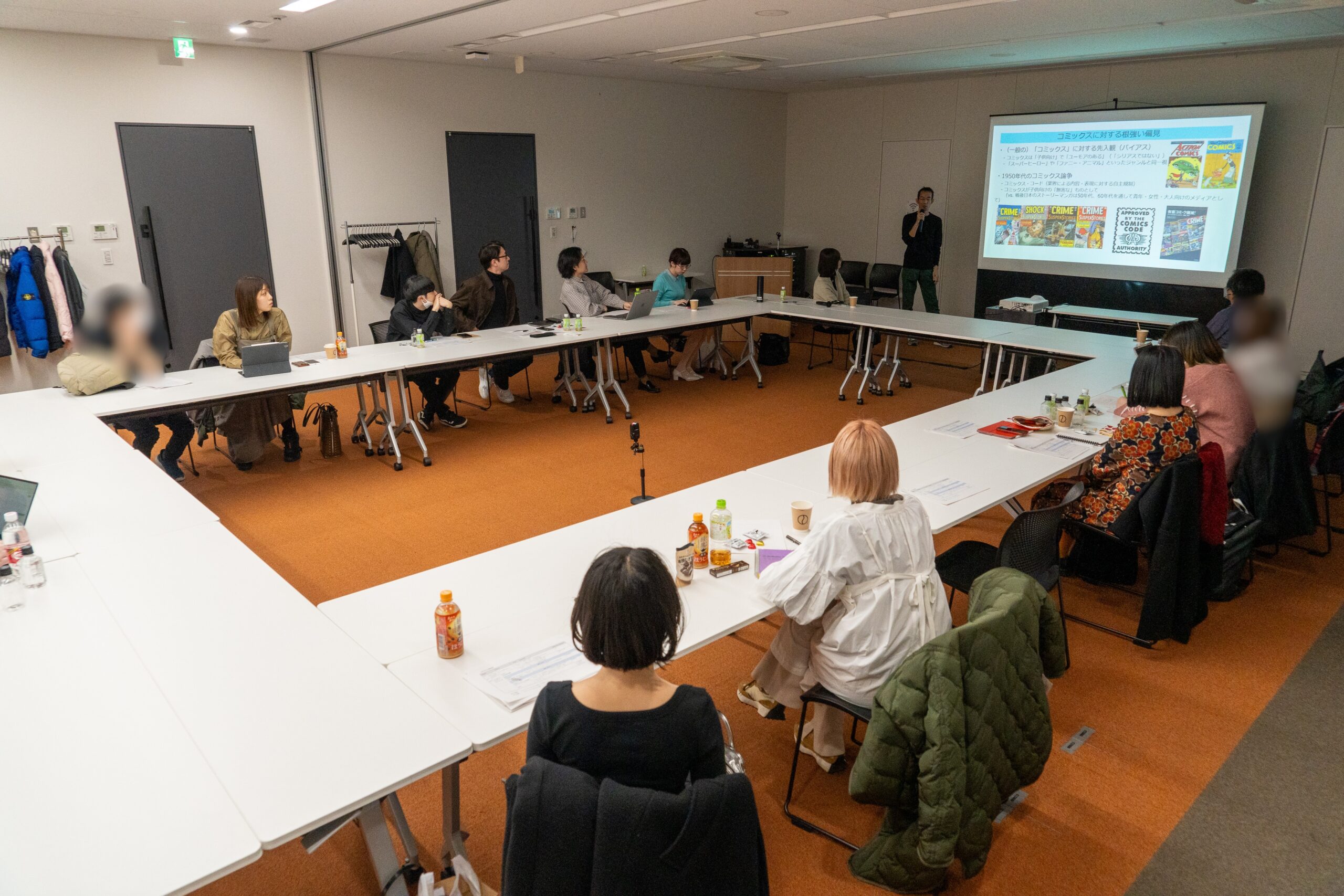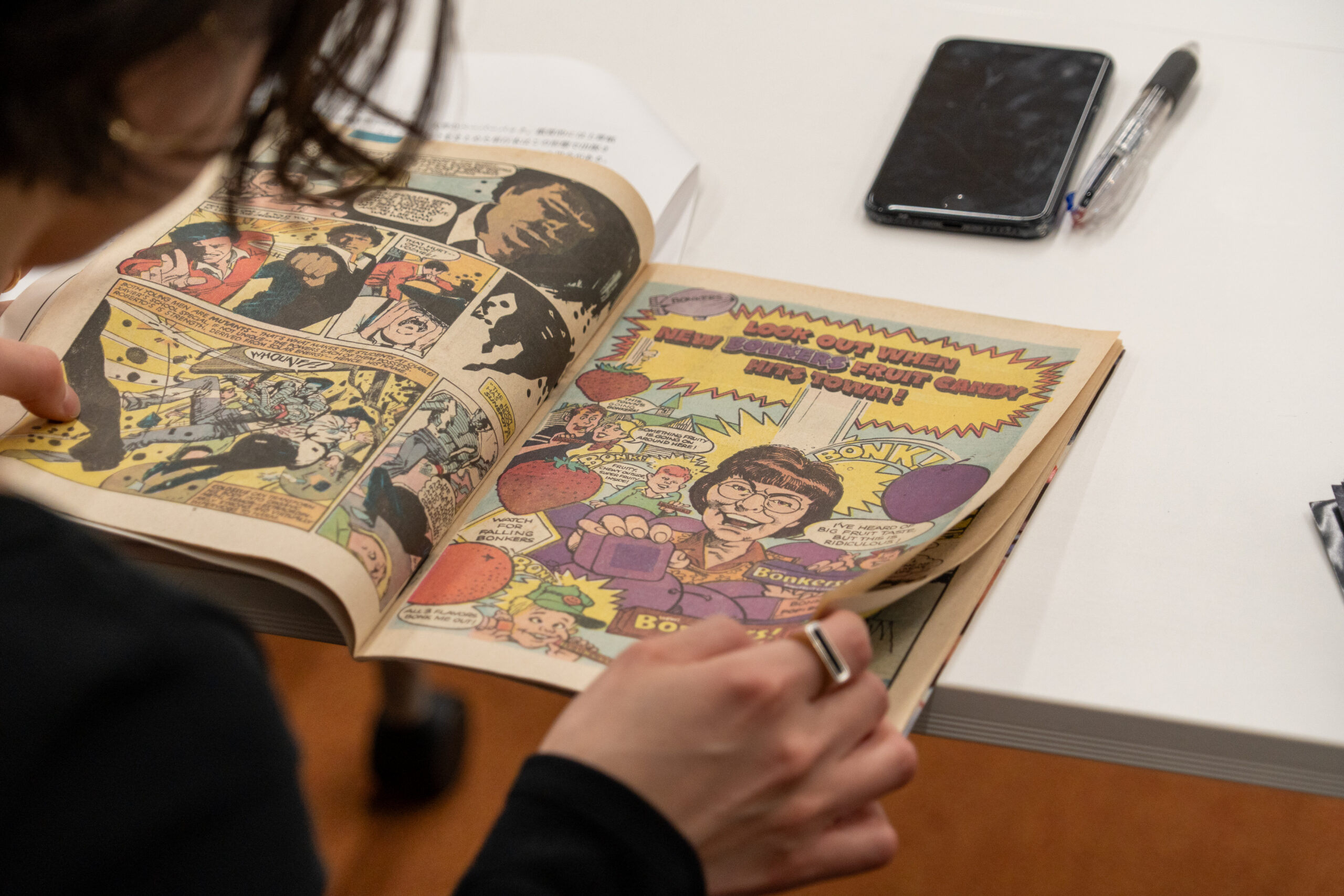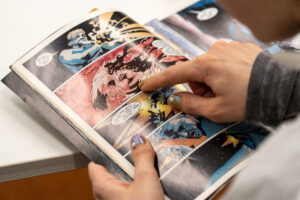ReportsMINT Lecture Part I: Eleven Manga Creators
2025/2/27

MINT Lecture Part I: Eleven Manga Creators
The MINT program is currently supporting 11 manga creators—including artists and editors—to take on the challenge of going overseas to gain their own global perspective. The first MINT lecture was held at Shuppan Club on February 13 with manga experts from Japan and abroad presenting to help provide the creators with the knowledge they need before going overseas.
The speakers at the first lecture were MINT advisors Odagiri Hiroshi and Shige “CJ” Suzuki along with Shiina Yukari from Japan’s Agency for Cultural Affairs. Overseas advisors Deb Aoki and Christopher Woodrow-Butcher were in Japan and able to sit in as observers. In the first session, Shiina explained the significance of the project, which aims to improve the recognition and appreciation of Japanese manga’s diversity, including the works by those in the MINT program. Then, under the topic of “Japanese Manga in the World,” she introduced popular Japanese manga in North America and covered the trend of manga sales in North America from the mid-1980s to now. By showing examples of manga and manga artists whose reputations differ between Japan and other countries, Shiina presented a lot of fascinating information on manga, such as the different standards of evaluation in different countries and cultures, as well as the different expectations for the medium.
The second session was led by Odagiri Hiroshi. Under the topic of “Comics and Manga in North America,” he explained what publications are considered “comics” as a whole in North America, using specific examples of formats and genres.


Those in attendance were able to hold and view a variety of physical copies of comics that were originally distributed in the US market.
Shige “CJ” Suzuki was the speaker for the third session. In his talk “How Japanese Manga Is Perceived and Received in English-speaking North America,” he spoke about how comics have historically been considered “for children” and “not serious” in North America. However, from the 1980s, the emergence of excellent works led to the diversification of the genre. As interest in authorship and artistry increased, the social status of comics was also elevated. Suzuki introduced this transitional period with representative works and also discussed the expectations American readers have for Japanese manga and manga artists, and how they are accepted.
The end of the lecture was followed by a lively Q&A session. The lecturers along with Deb and Christopher gave enthusiastic responses going well past the scheduled time.
There will be a total of three MINT lectures with the next lecture scheduled for March.
MINT Lecture Part I Outline:
Themes: “Japanese Manga in the World,” “Comics and Manga in North America,” “How Japanese Manga Is Perceived and Received in English-speaking North America”
Lecturers:
Shiina Yukari: Senior Specialist for the Arts and Culture Division, Agency for Cultural Affairs
Odagiri Hiroshi: Freelance Writer & Manga Researcher
Shigeru “CJ” Suzuki: Manga Researcher & Associate Professor at Baruch College, City University of New York
Participating advisors:
Debora Aoki: Manga Critic & Editor
Christopher Woodrow-Butcher: Manga Editor & Critic (Comic and Library Education Specialist)

